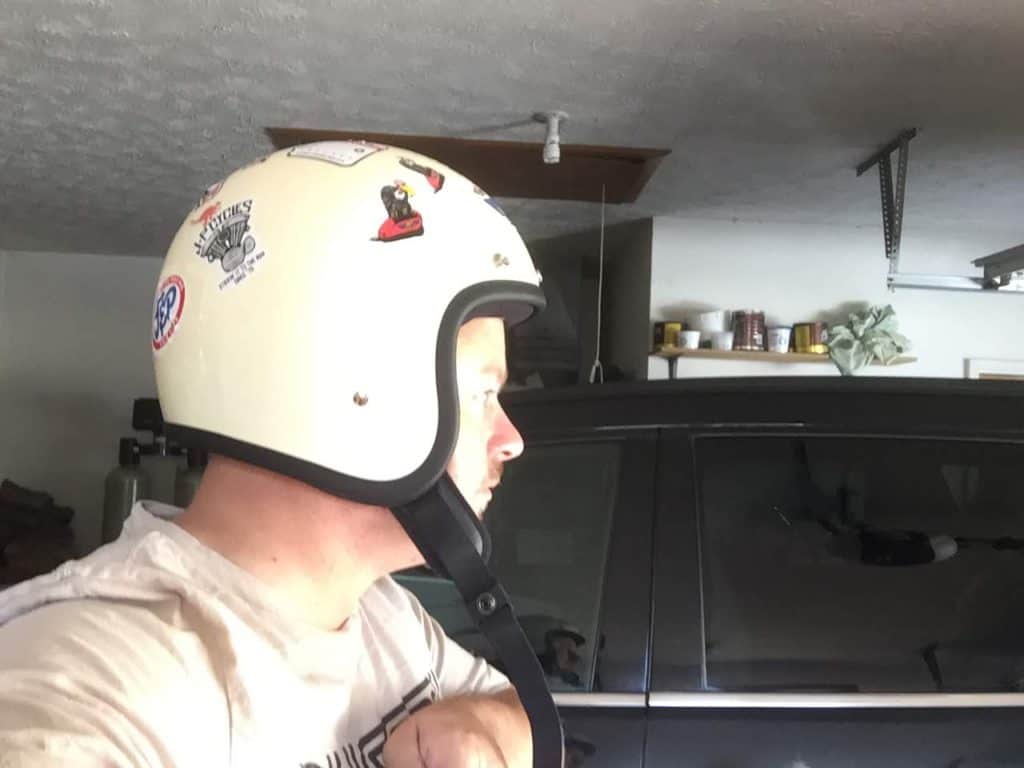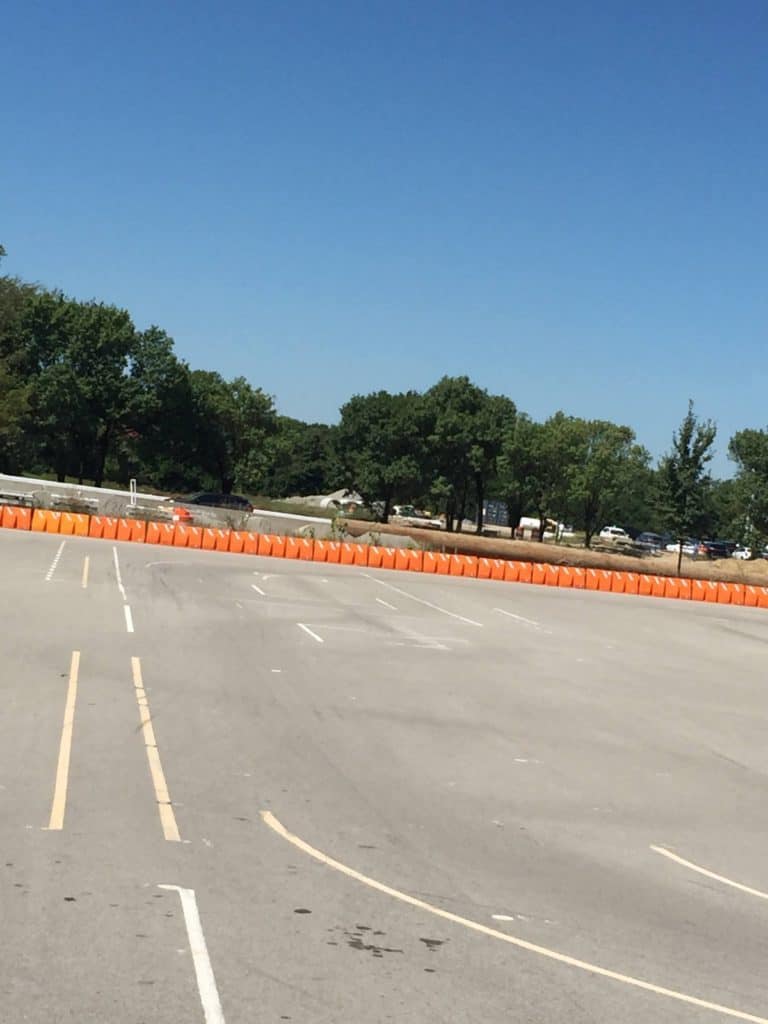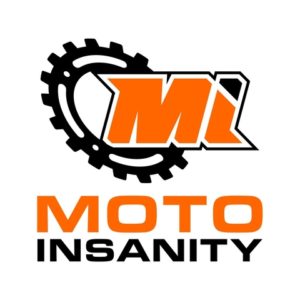I can remember taking my motorcycle permit test many times over the years. It took me over 10 years before I took the motorcycle riding test (I was just lazy.) Many individuals I speak with wonder if the motorcycle test is hard.
Is the motorcycle test hard? No. If you put in a right amount of study and practice, you should be able to pass the permit test and the riding test. The time needed to prepare for each one depends on your academic habits and how much you’re willing to practice drills on your motorcycle.
Preparing for each test makes you feel like you are eating an elephant. To ensure you pass the test, follow some tips and tricks outlined in this post. If you do, your confidence should be high enough to walk into the license branch or show up to the riding facility for your skills examination.
Different Motorcycle Tests
You should have easily picked up there are two tests new riders will probably face. The first is their permit test. Most states have this as a written test to ensure you know the “rules of the road.”
By the time I finally received my license, the Indiana permit test was straightforward for me. However, as noted at the beginning, I took it several times. Not all of my attempts were successful. This was not because the test was hard, but because I was too lazy to take the riding skills test.
When I did not have success, the failure from rushing through the questions so I could go home and get the bike out to ride made me feel ashamed. As you can imagine walking out of the branch with an unsuccessful examination, it filled my drive home with disgust.
Preparation For The Written Test
The best thing you can do to prepare for the written permit test is to take lots of practice tests. You can go to your license branch and receive a book for motorcycles specifically. Make sure you take time to read through or at least buzz through the book.
The more time you spend here cuts down on the back end of your efforts to get on the motorcycle. If you’re anything like me, this initiative would have enhanced my first ride of the spring many years in a row.
Here’s a great resource. I found four practice tests that are state specific. While each state will have similarities between content published in each of their books, there will be small nuances in the test questions. Check out this link for your state specific quiz.
Tips For Taking The Written Motorcycle Test
Many of us are not test takers. It’s not uncommon for someone to get anxious, nervous or even afraid to sit down and take a written test. The same individuals may perform exceptionally well once you get them out on the bike and on the road.

What we want to do here is give you a few tips on how to take a written test to reduce or ease your test-taking anxiety.
1. Make sure you get a full night’s rest before you take the written motorcycle examination.
2. Plan the date you will take your test. Make sure you stick with this date, in fact I recommend giving yourself a negative consequence if you do not take your test on the state. Something that may work is taking your spouse out for an expensive dinner or pledging $50 to a charity if you don’t take your test by the stated date.
3. Upon receiving your test, slow down and take ten deep breaths before you even look at the first question. This will help calm your nerves, give your brain lots of oxygen, and put you in the right mindset before you even begin.
4. As you take the test pass over the ones that seem difficult. You can come back to those later. The first few questions you want to answer should have a high level of confidence you’ll be correct. As you maneuver through the test, some tough questions may seem easier.
5. For those questions that are still hard, look for other questions on the test that may give you clues as to the correct answer.
6. After trying tip #5 you may also try using the process of elimination to narrow your answer down to a best guess. Many times you can narrow answers down to a 50-50 chance. While this is not ideal, it’s better than a 1 in 4 or 1 in 5 chance by not eliminating some answers.
7. Know that if you do not pass, you will take the test again. In Indiana, you can take the test again after waiting 24 hours. Or at least that’s what it was when I took my last permit test.
These tips should get you through your permit test. If you find yourself not passing the test because you’re nervous about riding a motorcycle check out this post where we talk about how to overcome your fears of riding.
Motorcycle Riding Test
Now you know what to expect for the written permit test, let’s change our focus to the riding skills test. Perhaps this is the most scary of the two.
It can be scary for two reasons. First, you apply riding techniques and show knowledge of some material covered on the written test. Specifically, things like brake levers, changing gears , and following distance.
Second, the riding test will be in front of people you don’t know. If you drop the bike or make a big mistake, everyone will see it. This can be embarrassing.
Embarrassing Moments During The Riding Test
I can remember the first time I took the writing test I saw individuals who were not ready to show their skills on the course. I passed the test just fine, but one individual stands out.
This person was riding a big scooter and by the definition of Indiana law was considered a motorcycle. One test requires you to achieve a speed of 15 to 20 miles an hour and apply your front brake at a specific point in stop before a second point.

The individual on this big scooter achieved a speed much greater than 20 miles an hour. When the rider realized they were going too fast, they applied the front brake even harder than they would have otherwise.
The rider went down skidding across the pavement. It appeared life was happening in slow motion. I distinctly remember seeing them apply the front brake and the handlebars and front wheel turning to the left. The rider’s weight transferred to the right, taking the rider and scooter down. He skids to the right, and the motorcycle goes to the left.
It was good seeing the rider get up right after the accident, but people were laughing at this novice. You could see their face turn bright red. Unfortunately, I was one of those individuals laughing. And it’s not one of my proudest moments, but I now appreciate the courage it took for the rider to try to finish knowing he already failed crashing in front of so many people.
What To Expect On The Riding Test
Let’s talk about what to expect when you show up for the riding test. While each state is different, we’ll talk in generalities to help yourself stay calm before and during your skills challenge.
1. Make sure you show up early. This allows you to walk the grounds and become familiar with the area where you’ll be taking the test. When I did this, it allowed me to take deeper breaths to relax and be one of the first ones to test for the day.
2. When you show up early, walk the course. You may even feel a little like those individuals walking a race track to understand the nuances where the lines are or bumps are on the course. Your level of comfort and confidence should increase.
3. Visualize yourself running through the course. You should know ahead of time what skills they will test and should have practiced those well before your test date. As you visualize yourself running through the unique challenges, make sure you slow down and think about when you should apply the brake, shift, or turn.
4. The instructor gives directions to the larger group and then likely to each subgroup. Make sure you’re up front so you can listen to her instructions. There’s nothing worse than completing an exercise only to find out you failed because you didn’t follow their instruction.
5. If you are coming up to a skill that you’re a week on, try to slow down and think about the process to get through the exercise. This comes back to the visualization we talked about in number three, but you will do it right before you complete the drill. Take a few deep breaths. I’m not talking about the breaths that are huffing and puffing, but the calming breaths you have after a moment of stress. By doing this ahead of the drill, you’ll start to feel the weight lift off your shoulders.
Best Motorcycle For Riding Test
I mentioned earlier that I took the riding skills test more than once. I ended up taking it a second time because I did not get my actual license within 30 days after completing the writing skills examination. Don’t make this mistake.
| Take Your Skills Test On A Motorcycle With These Attributes |
| Light and nimble |
| Low center of Gravity |
| Short Wheel Base |
Because I missed the 30-day window to get my license after the test, I let a few years pass from the first skills test to the second. I did not want to go back, and it was again because of the embarrassment. The reality is no one knew I was back for a second time. If you’re in this boat, do not worry.
The second time I took the test it was on a much bigger, heavier motorcycle. The first time I took the test I was on a much lighter motorcycle. I would refer to this as very flickable. Think of it like you seeing a MotoGP rider lean a motorcycle back and forth through a chicane.
Besides being nimble, the motorcycle should have a low center of gravity making it easier to get through tight turns. When a motorcycle has a high center of gravity, it becomes hard to make tight turns and the motorcycle wants to fall over.
The third characteristic of a superb skills test motorcycle is a short wheelbase. Besides a low center of gravity its short wheel base makes the motorcycle easier to maneuver in small areas.
Knowing You’re Ready For the Motorcycle Riding Test
You’ll know you’re ready for the motorcycle skills test if you can accomplish each of the following.
1. You have reviewed the skills outlined in your local BMV motorcycle handbook.
2. You have set up and easily run through the skills outlined in number one.
3. You can ride through these skills in different parking lots and on different surfaces. You may even work on making the skills harder by reducing areas making the turns tighter. Trying to stop in shorter distances.
Even upon accomplishing the three points above, I would encourage you to check out this link and the skills outlined by Ride Like A Pro with the Motorman. He has a great YouTube channel outlining skills and drills you can try on your own.
Using the resource just listed will take your skill-set beyond what they require to pass the riding test and help ensure you have a practical application for street riding. This could even save your life.
I get out there and do a some rock and roll riding.
